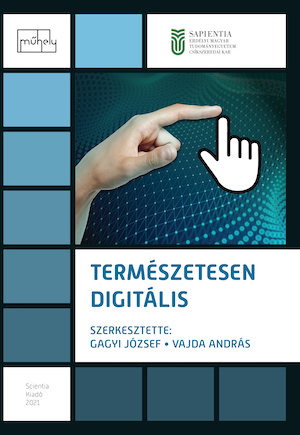OFFLINE ÉS ONLINE KÖRNYEZETEK KONVERGENCIÁJÁNAK VIZSGÁLATA VALLÁSI KÖZÖSSÉGEKBEN
EXPLORING THE CONVERGENCE OF OFFLINE AND ONLINE ENVIRONMENTS IN RELIGIOUS COMMUNITIES
Author(s): Mónika Andok
Subject(s): Theory of Communication
Published by: Scientia Kiadó
Keywords: religious communities; communication technology; offline and online religious practices;
Summary/Abstract: Many schools of media theory address the question of how changes incommunication technology affect society, communities, organizations, and institutions. The most prominent of these is the Toronto School, Marshall McLuhan’s theory of technological determinism and critiques of this approach. In this lecture, I will draw on the social shaping of technology (SST) theory, which provides a different explanation of the relationship between community and technology than technological determinism (Williams–Edge 1996). While the latter explains change from the perspective of technology, SST explains change from theperspective of the community adopting technology, saying that the community will determine the direction and extent of technological innovation. This theory was further developed by Heidi Campbell, an American, specifically for religious communities’ use of media technology (Campbell 2004, 2010). Campbell explore show some religious groups, given their values, norms, and previous attitudes towards media technology, adapt new tools in ways that are acceptable to thegroup and fit with the group’s previous norms, values, and religious and cultural practices. Campbell calls this his extended theory of religious social shaping oftechnology (RSST). Today, research on religious communities on the Internet has a history of somethirty years. This period has been divided by Campbell and Vitullo (2016) into four major eras, essentially in a time lapse fashion. The first phase lasted from the late1980s to the mid- to late 1990s. It involved describing, mapping, and documenting how each virtual group defined itself as a (quasi) religious group. The second phase was a period of categorization. This fell in the second half of the nineties and the early twenties. The common features and the different characteristics of virtual religious communities were identified in the research. This was followed by a typology of the communities studied in the light of the presence or absenceof these characteristics. In the third phase, offline religions also began to exploit the potential of the Internet. In the fourth phase, the intersection and interaction between offline and online religious practices and discourses are explored – how believers integrate digital religious content and practices into their daily lives. In my presentation, I would like to show through the digital media usage patterns of two Hungarian religious communities, the 777blog community and the Krishna Consciousness community of believers, where the boundaries of “Naturally Digital” are for religious communities.
Book: Természetesen digitális
- Page Range: 141-152
- Page Count: 12
- Publication Year: 2021
- Language: Hungarian
- Content File-PDF

